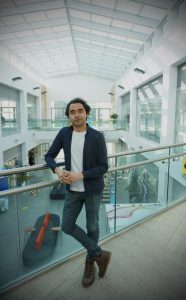 Bilkent EE PhD graduate Polat Göktaş has received a Marie Skłodowska–Curie Career-FIT PLUS fellowship and funding from Enterprise Ireland and the European Union under the Marie Skłodowska-Curie Actions (MSCA) COFUND scheme, which is part of the EU’s Horizon 2020 Research and Innovation program.
Bilkent EE PhD graduate Polat Göktaş has received a Marie Skłodowska–Curie Career-FIT PLUS fellowship and funding from Enterprise Ireland and the European Union under the Marie Skłodowska-Curie Actions (MSCA) COFUND scheme, which is part of the EU’s Horizon 2020 Research and Innovation program.
The MSCA Career-FIT PLUS program, an initiative of the European Commission, provides grants for experienced researchers and encourages transnational, intersectoral and interdisciplinary mobility.
Enterprise Ireland and the EU have backed a project that will apply artificial intelligence to the process of stem cell manufacturing; Dr. Göktaş is one of three core team members for the project, titled “DeepStain: Deep Learning for Cell Image Analysis.” It is hoped that DeepStain will accelerate the development and manufacturing of cell therapies by developing novel, non-destructive cell analytics.
The project is part of a strategic partnership between Valitacell, an Irish biotechnology company, and CeADAR, Ireland’s Centre for Applied Artificial Intelligence at University College Dublin (UCD). Dr. Göktaş is affiliated with both Valitacell and CeADAR at UCD as a Skłodowska–Curie Fellow.
Cell therapies are medicines that are administered to patients as living cells. They have the potential to treat many conditions, including cancer, arthritis and Crohn’s disease, but can be hard to manufacture because monitoring stem cell quality involves a great deal of slow and difficult laboratory work. The DeepStain project will use AI to quickly analyze images of stem cells to determine their quality and make stem cell manufacturing more efficient.
“AI can massively help to improve the biopharma value chain. In this project, we will be applying the latest techniques in computer vision to speed up the process of manufacturing stem cells,” Dr. Ricardo Simon Carbajo of CeADAR explained.
Dr. Paul Dobson of Valitacell expressed the team’s vision regarding the significance of DeepStain, saying, “This will help translate stem cells from being a niche experimental therapy into a treatment available to patients worldwide.”
